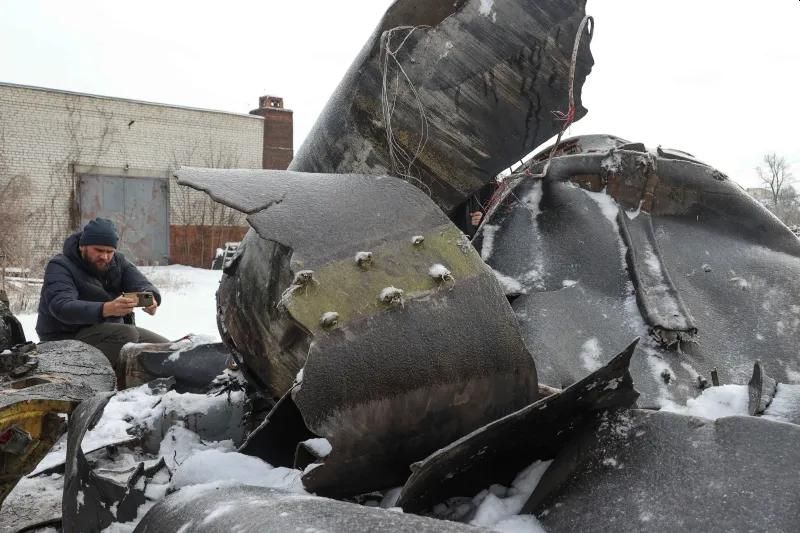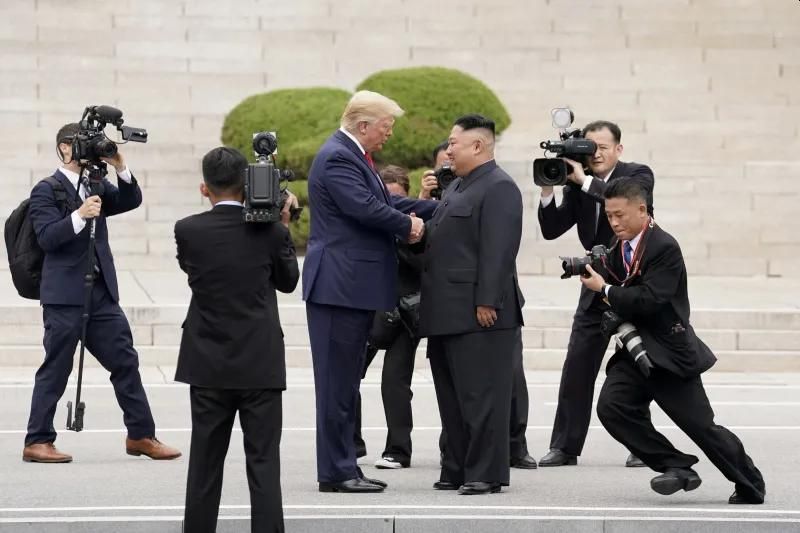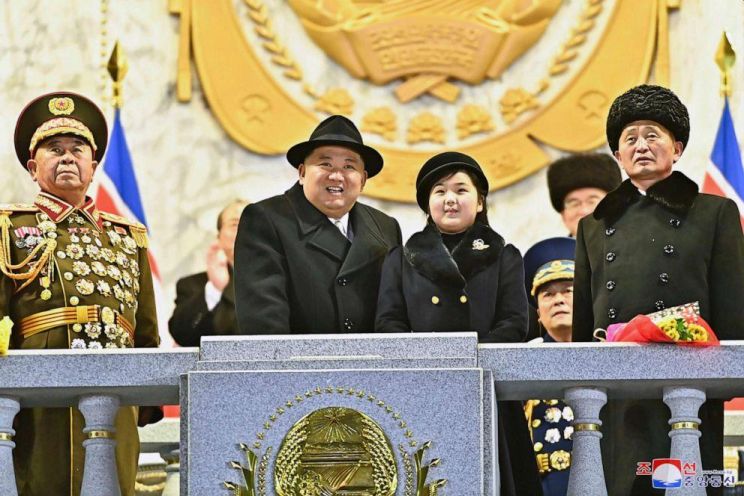By Eric Vandenbroeck and co-workers
The Strange Success of North Korea
In 2017, the highly
militarized regime of Kim Jong Un of North Korea found itself confronting a rare
coalition of China, Russia, and the United States. In response to North Korea’s
successful test of its first intercontinental ballistic missile and
thermonuclear device, the usually gridlocked UN Security Council had
unanimously enacted a series of tough sanctions. Initiated by Washington and
supported by both Beijing and Moscow, these punitive measures had the potential
to devastate the North Korean economy. Meanwhile, President Donald Trump, who
had recently entered the White House, was openly discussing the possibility of
a preemptive strike, promising to unleash “fire and fury” against North Korea.
Today, things look
considerably different. First, as the rivalry between the United States and
China has intensified, Beijing cannot afford to pressure North
Korea in ways that might create instability on China’s doorstep and has
taken steps to buttress the Kim regime. Since Russia’s full-scale invasion of
Ukraine in 2022, North Korea’s large military complex has become indispensable
to Moscow, with Pyongyang supplying vast quantities of ammunition, and now
thousands of troops, to the Russian war machine.
Finally, with Trump’s
victory in the U.S. presidential election in November, Kim may have an
opportunity to further cement his gains in the international arena. Despite the
menacing rhetoric early in his first term, the president-elect seems, in
contrast to his Democratic opponents, to harbor some positive feelings toward
Kim, and he has said he hopes to reach some kind of deal with the North Korean
leader. Not even the test of a new intercontinental ballistic missile—one that
can hit any point in the continental United States— on the eve of the U.S.
election, or Pyongyang’s embrace of a more hostile doctrine toward South Korea,
has caused much difficulty for Kim: unlike in 2017, the UN Security Council has
not responded to these challenges.
Although it is
difficult to predict how future events will affect his rule, Kim has been a
distinct beneficiary of the growing antagonism between the United
States and both China and Russia. Perversely, even as North Korea becomes
more threatening to its neighbor in the south and poses a greater military
challenge to the West, it has gained more economic stability and become less
vulnerable to outside pressure. This new situation suggests that during Trump’s
second term, the Kim regime may become even more assertive, continuing to
advance its nuclear and missile programs with even less concern about internal
and external threats.
Beijing’s Bounty
At the heart of North
Korea’s shifting fortunes is the dramatic improvement of its relations
with China. For a long time, despite loudly proclaimed statements of
mutual affinity—so-called friendship rhetoric—relations between Beijing and
Pyongyang were far from idyllic. On the one hand, Chinese leaders valued North
Korea as a buffer against the West and sometimes even maintained the fiction of
close solidarity with what they called one of the few remaining fellow
“socialist” countries. On the other hand, they were irked by the Kim regime’s
refusal to emulate China’s market-oriented economic reforms and viewed North
Korea’s nuclear ambitions as a threat to the nonproliferation regime that
Beijing favored and supported. China also worried that Pyongyang’s provocative
behavior gave the United States an additional pretext for its continued
military presence in the region. Sometimes North Korean actions—including,
above all, its nuclear tests—led to friction between Beijing and Pyongyang.
As China’s rivalry
with the United States has grown, however, North Korea’s strategic value to
Beijing has come to outweigh all other considerations in Chinese thinking.
Heavily armed North Korea offers some depth for China’s defenses, while also
creating a buffer between China and U.S. bases and listening stations
in South Korea. On top of that, China cannot afford instability or chaos
in a neighboring country with nuclear weapons. A West German‒style absorption
of the impoverished North by the wealthy, pro-American South is now a nightmare
scenario for Beijing—and the collapse of the Kim regime might lead to such an
outcome, even if Seoul is no longer enthusiastic about the prospect of assuming
responsibilities for the North.
The remains of a North Korean missile used in a
Russian strike in Kharkiv, Ukraine, January
2024

Thus, around 2019,
China began to increase its aid to Pyongyang significantly, embarking on a
policy aimed at keeping the North Korean regime afloat. China is now shipping
undisclosed but large amounts of free fuel, food, and fertilizer to North Korea
and turning a blind eye to North Korean violations of the 2017-‒19 UN sanctions
regime, as long as these violations remain relatively
small-scale and deniable. This aid keeps North Korea from sliding into famine
and instability, but, given the size of China’s economy, it does not cost China
much. (North Korea’s population is less than 2 percent of China’s, and its GDP
is a minuscule 0.2 percent of China’s.) Among other things, Chinese aid allowed
North Korea to navigate the uneasy COVID-19 period, when its borders were
virtually closed and its overseas trade came to a
complete standstill.
Moreover, despite
this influx of aid, China has not gained more control over North Korean
actions. China may be able to extract some minor concessions: for example, it
seems likely that Chinese pressure has prevented North Korea from conducting a
nuclear test thus far. At the same time, China’s backing has limits: Beijing is
not lavish in its support and is not committed to funding a broader economic
transformation of its neighbor. Nevertheless, the aid has been enough to
compensate for the chronic inefficiencies of North Korea’s economy and the
impact of sanctions. And the Kim regime also knows that Beijing needs a stable
and manageable North Korea and will not risk penalizing
it for actions China is unhappy about. Therefore, China is highly unlikely to
apply the kind of pressure that could produce a tangible change in its
neighbor, and North Korea can expect to receive shipments of Chinese aid more or less unconditionally, probably for years to come.
Manning Up for Moscow
Russia’s war in Ukraine has brought its windfall to
the North Korean elite. Initially, Moscow’s invasion of its Western neighbor
seemed distant and irrelevant to Pyongyang, but as the conflict devolved into a
prolonged war of attrition, with trench warfare reminiscent of World War I,
artillery and manpower became crucial. Before long, the Kremlin discovered that
North Korea was not only a major producer of the weapon Russian soldiers need
most—heavy artillery shells—but also the only country willing to sell such
ammunition to Russia in large quantities. Since early 2023, North Korea has
shipped millions of shells, along with some other weapons and ammunition, to
the Ukrainian front. The revenue from this deal in 2023 alone is conservatively
estimated at $540 million—adding almost 25 percent to North Korea’s overall
trade volume.
Then, in 2024, the
Kremlin’s increasingly acute manpower shortages paved the way for even greater
North Korean participation in the war, likely finalized during Putin’s meeting
with Kim in North Korea in June: Pyongyang agreed to send troops—11,000 soldiers
so far—to Russia in exchange for money, food, and likely, some advanced
military technologies. In addition to filling Russia’s manpower gap, the deal
allows Russia to sustain the war at a significantly lower cost: North Korean
troops are far less expensive than Russian volunteers, who now receive up to
$30,000 as a bonus when they enlist, plus a salary of at least $2,000 a month.
The deal also reduces pressure on Putin to impose a second mobilization, whose
implementation might trigger more public discontent in Russia. (For now, North
Korean forces have been deployed in the Kursk region of Russia, where Ukrainian
forces have taken a small patch of territory, rather than in Ukraine itself.)
For Pyongyang, the
deal brings, along with substantial revenue, important strategic benefits.
Among other things, it might give North Korea access to various advanced
Russian military technologies—including for missile engines and reconnaissance
satellites—that had been difficult or impossible to obtain. Moscow may also be
more willing to engage in nonmilitary cooperation projects, potentially even
subsidizing such joint ventures. Meanwhile, North Korean ground forces, which
have not seen combat since 1953, are gaining valuable battlefield experience.
And with new Russian diplomatic support, North Korea is less isolated
internationally, with the UN Security Council unlikely to take further action
against it.
North Korean leader Kim Jong Un chairing a party
meeting in Sinuiju, North Korea, July 2024

The arrangement is
not without risks. If North Korean troops perform
poorly on the battlefield, it will make Pyongyang look more vulnerable. During
their deployment, North Korean soldiers are also likely to have some access to
the Internet and tunable radios (both media are banned in North Korea), so they
might be exposed to uncensored information about the world, especially from
South Korea. However, these risks seem minor compared with the likely gains.
Significantly, the
sudden influx of Russian money seems to have encouraged Kim to move further
away from China. Relations between Pyongyang and Beijing have cooled noticeably
since the deals with Russia were made. However, despite North Korea’s continued
economic dependency on China, the Kim regime has little reason to be concerned
by the mood in Beijing. Despite its current frustration with its neighbor,
China has little choice but to continue backing Pyongyang, and North Korea
knows that tighter relations can be restored almost instantly if needed. If,
for example, the war winds down in Ukraine and Russia loses interest in dealing
with North Korea—quite a likely outcome, despite talk of a new “dictators’
alliance”—Pyongyang will still have China to fall back on.
Domestically, the Kim
government has reacted to its new relations with China and Russia in a
predictable way. Following the 2017 sanctions, the government could not advance
the market-oriented economic reforms, somewhat similar to
those of the 1980s’ China, that Kim and his advisers had initiated and
implemented, with noticeable success, between 2012 and 2018. Now, having
secured Chinese and Russian money, the North Korean government has made a full
U-turn, reviving the command economy model and further
building its surveillance state. Although this neo-Stalinist approach is
economically inefficient, it does allow the government to maintain total
control of the population. Tighter surveillance is what Kim
and the elite have always wanted, but it is the growing support from Moscow and
Beijing that has made it possible to strengthen their control of the economy
and society. (And the introduction of the super-tough sanctions regime in
2017‒2019 also made any export-oriented policy—a vital ingredient of the erstwhile
reformist policy—untenable.)
Back to Hanoi?
A final, if less
certain, dimension of North Korea’s resurgence is Donald Trump’s return to the White
House. For the Kim regime, Trump’s first term was both a threat and an
opportunity. For a brief period at the beginning of his administration in
2017, Trump seemed prepared to use force against the North, but
despite his open threats, such plans, if they ever existed, were soon abandoned.
Instead, the president suggested that he would be willing to discard the
long-held, but increasingly unrealistic U.S. policy goal of “CVID”—complete,
verifiable, and irreversible denuclearization of North Korea—and negotiate a
deal based on accepting North Korea as a nuclear power, but with limitations.
The contours of such
a deal emerged at the 2019 Trump-Kim summit in
Hanoi: if North Korea agreed to dismantle a significant portion of its nuclear
facilities—ideally, all known facilities—the United States would lift several
major sectoral sanctions targeting the country’s economy. Such a deal would
have allowed North Korea—whether explicitly or implicitly— to retain the
nuclear devices it had produced, along with their delivery systems. It is also
likely that Pyongyang would manage to hide at least some nuclear R & D and
manufacturing facilities and secretly keep them operational. Although the 2019
Hanoi negotiations broke down because of both sides’ inability to agree on
certain technical issues, they provide a template for what Trump might attempt
in his second term.
U.S. President Donald Trump with Kim at the North
Korean border, June 2019

For the United
States, the primary advantage of pursuing a Hanoi-style deal would be to slow
down the rapid advancement of North Korea’s nuclear and missile technologies.
Although Pyongyang might eventually break its promises and walk away, it would
take significant time and resources to rebuild its nuclear facilities once they
are dismantled. If instead the United States continues the Biden
administration’s policy of essentially doing nothing while repeating the old
mantra of total denuclearization, the only plausible outcome is North Korea’s
deployment of ever more advanced nuclear weapons.
It has been suggested
that, alternatively, the Trump administration might revive its “fire and fury”
approach. That kind of maximum pressure, however, is unlikely to succeed in the
world of 2025. With Russia and China behind it, North Korea is less likely to
be intimidated, and the Trump administration is in any case likely to be
distracted by a far larger number of challenges worldwide.
On the other hand,
the renewed possibility of a U.S.-North Korean deal raises concerns in South
Korea, since it could threaten South Korea’s own security. There are widespread
fears in Seoul that the Trump administration might use a compromise with Pyongyang
as a pretext to justify the withdrawal of the U.S. forces from the peninsula,
leaving South Korea to face a nuclear-armed adversary on its own. Trump’s
negative attitude to overseas commitments is widely known, and he has
specifically criticized the U.S. military presence in South Korea a number of times.
For Kim, however,
such a deal would offer many benefits. It would implicitly recognize North
Korea as a de facto nuclear power and might even lead to some kind of
normalization with Washington. With the partial lifting of UN sanctions, North
Korea would become less dependent on China while retaining Beijing’s support
should the need arise. Still, it would be a mistake to think that Kim and his
advisers are desperate to negotiate with Trump. From 2017 to 2019, in the
run-up to the Singapore and Hanoi summits, they felt cornered and had far more
incentive to seek a compromise. Now they know that they can manage without it.
Kim’s New Kingdom
For the first time
since the end of the Cold War, Pyongyang is not a pariah state and has reliable
foreign backers—great powers driven not by some nebulous ideology but by cold,
pragmatic, long-term calculations. The Kim regime’s December 2023 decision to
reclassify South Korea as a “different and hostile state,” thus breaking with a
decades-old policy of regarding it as a partner in unification efforts, is
another sign of growing assertiveness.
In the past, North
Korea saw the South as a source of aid, but now it has sufficient aid from
other sources to sustain its economy. It is also ready to jettison the rusty
unification rhetoric, which ceased to be realistic decades ago. As Pyongyang
sees it, a more straightforward, confrontational approach has greater benefits,
since it justifies keeping North Korea’s population isolated from the
dangerously rich South and hostile toward potentially subversive South Korean
cultural influences.

With China and, for
the time being, Russia behind it, the Kim family has more confidence about its
own future in power than at any other time in the past three decades. The
domestic elite seems to be sharply under its thumb, too. The spread of
dangerous knowledge about the outside world among North Korea’s youth remains
an issue, but North Korea’s borders are more tightly controlled than ever.
Over the past two
years, Kim’s daughter—her name, never mentioned in the official publications,
is believed to be Kim Ju Ae, and she is now in her early teens—has frequently
appeared at the North Korean leader’s side at official events. It seems
possible she will eventually inherit his power, perhaps remaining at the helm
for years to come. For the moment, at least, North Korea and the Kim dynasty
may be among the clearest beneficiaries of an increasingly fractured world.
For updates click hompage here